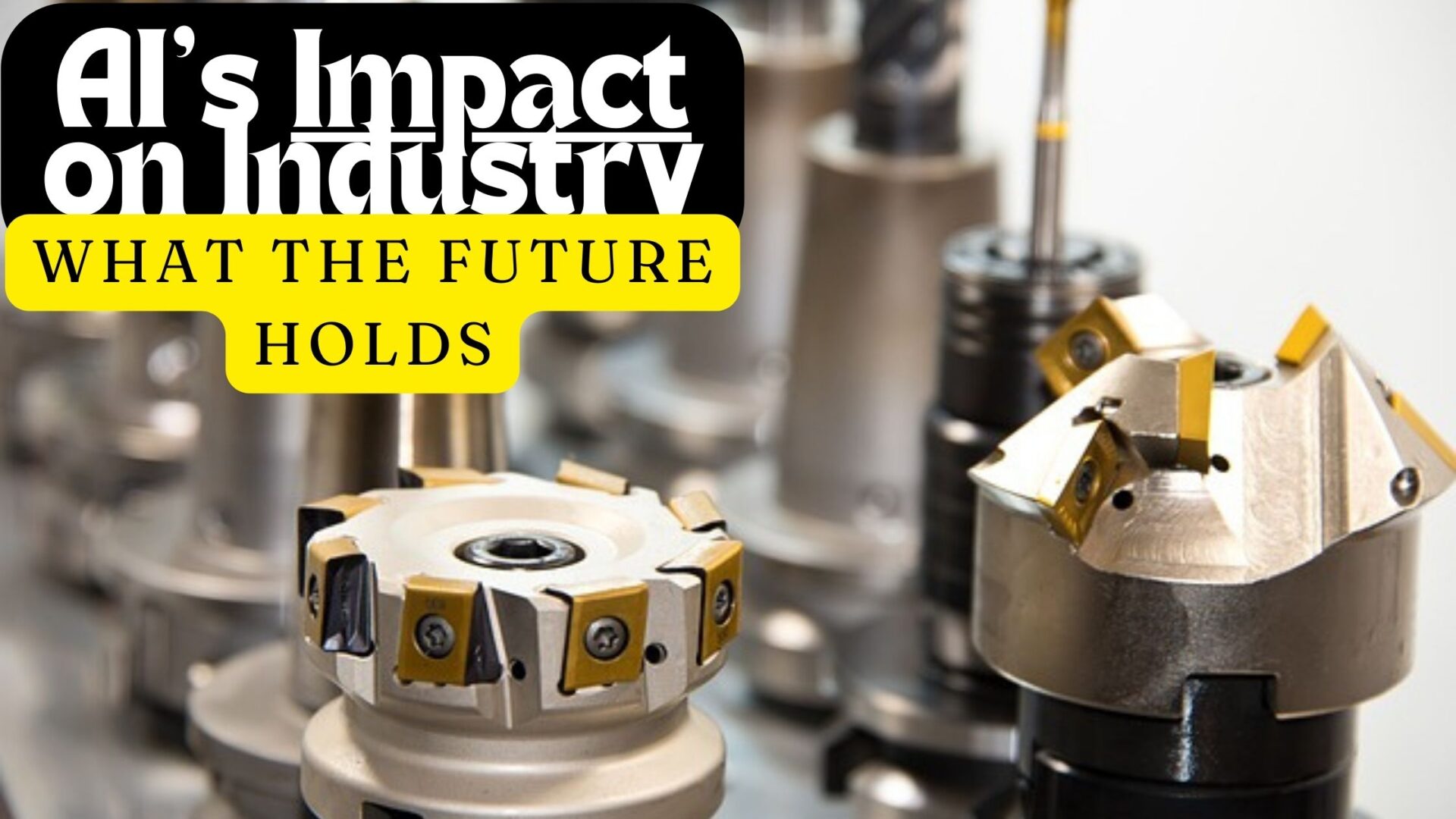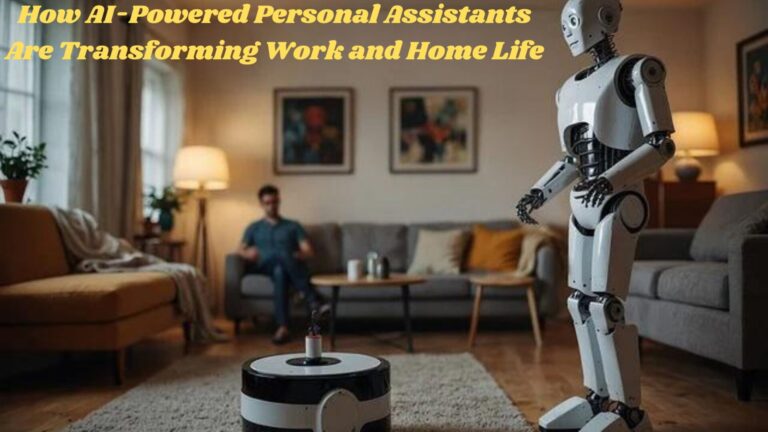Introduction:
AI’s Impact on Industry: What the Future Holds

Artificial Intelligence (AI) has rapidly evolved from a futuristic concept into a transformative force reshaping various industries. As we look toward the future, the implications of AI are vast and profound, promising to revolutionize how businesses operate, innovate, and compete. In this article, we explore the anticipated impact of AI across several key industries, drawing on expert insights and current trends.
AI’s Impact on Industry
AI is set to impact a wide range of industries significantly in the future. Some of the industries expected to experience the most substantial transformation include:
- Healthcare:
- Diagnostics and Treatment: AI can improve the accuracy and speed of diagnostics, personalize treatment plans, and even assist in complex surgeries.
- Administrative Efficiency: AI can automate administrative tasks, reducing costs and improving patient care.
- Finance and Banking:
- Fraud Detection: AI can enhance fraud detection and risk management.
- Customer Service: AI-powered chatbots and virtual assistants can provide 24/7 customer support.
- Algorithmic Trading: AI can analyze vast amounts of data for better investment strategies.
- Manufacturing:
- Predictive Maintenance: AI can predict equipment failures before they happen, reducing downtime.
- Quality Control: AI can enhance product quality by detecting defects in real-time.
- Automation: AI can streamline production processes, improving efficiency.
- Retail:
- Personalized Shopping: AI can offer personalized product recommendations and enhance the customer shopping experience.
- Inventory Management: AI can optimize inventory levels and predict demand more accurately.
- Transportation and Logistics:
- Autonomous Vehicles: AI is crucial in developing self-driving cars and trucks.
- Route Optimization: AI can optimize delivery routes and improve logistics efficiency.
- Fleet Management: AI can enhance the maintenance and operation of fleets.
- Agriculture:
- Precision Farming: AI can optimize planting, watering, and harvesting, increasing crop yields.
- Pest and Disease Control: AI can detect and manage pests and diseases more effectively.
- Energy:
- Smart Grids: AI can optimize energy distribution and consumption.
- Renewable Energy Management: AI can improve the efficiency and integration of renewable energy sources.
- Education:
- Personalized Learning: AI can provide tailored educational experiences to individual students.
- Administrative Efficiency: AI can automate administrative tasks, allowing educators to focus more on teaching.
- Customer Service:
- Virtual Assistants: AI can provide efficient and accurate customer support.
- Sentiment Analysis: AI can analyze customer feedback and sentiment to improve service quality.
- Entertainment and Media:
- Content Creation: AI can assist in creating music, art, and literature.
- Personalized Content: AI can offer personalized content recommendations to users.
These industries are already experiencing changes due to AI, and the trend is expected to accelerate as AI technologies continue to advance.
What are the challenges of implementing AI in traditional industries?
Implementing AI in traditional industries comes with several challenges that need to be addressed for successful integration. These challenges include:

- Data Quality and Availability:
- Insufficient Data: Traditional industries may lack the volume and quality of data needed for effective AI models.
- Data Silos: Data may be fragmented across different departments, making it difficult to consolidate and analyze.
- Legacy Systems:
- Integration Issues: Existing systems may not be compatible with new AI technologies, requiring significant upgrades or replacements.
- High Costs: Upgrading legacy systems to support AI can be expensive and time-consuming.
- Skill Gaps:
- Lack of Expertise: There may be a shortage of skilled professionals who understand both the industry and AI technologies.
- Training Needs: Existing staff may need extensive training to work with AI systems.
- Cultural Resistance:
- Fear of Job Loss: Employees may fear that AI will replace their jobs, leading to resistance against its implementation.
- Change Management: Organizations may face resistance to change from within, hindering the adoption of AI.
- Ethical and Regulatory Concerns:
- Privacy Issues: AI systems often require large amounts of data, raising concerns about data privacy and security.
- Regulatory Compliance: Industries may need to navigate complex regulatory environments to implement AI, especially in sectors like healthcare and finance.
- Cost of Implementation:
- High Initial Investment: The cost of developing, deploying, and maintaining AI systems can be prohibitive for many traditional industries.
- Return on Investment: Measuring the ROI of AI projects can be challenging, making it difficult to justify the investment.
- Scalability:
- Pilot to Production: Moving AI solutions from pilot projects to full-scale production can be challenging.
- Infrastructure Requirements: Implementing AI at scale may require substantial investments in IT infrastructure.
- Data Security:
- Cybersecurity Threats: AI systems can be vulnerable to cyberattacks, necessitating robust security measures.
- Data Integrity: Ensuring the integrity and reliability of data used in AI systems is critical.
- Bias and Fairness:
- Algorithmic Bias: AI systems can inherit biases present in training data, leading to unfair or discriminatory outcomes.
- Fairness and Transparency: Ensuring that AI systems are transparent and fair is essential for gaining trust and compliance.
- Maintenance and Monitoring:
- Continuous Improvement: AI models require ongoing maintenance and updates to remain effective.
- Performance Monitoring: Regular monitoring is needed to ensure AI systems are performing as expected and to make necessary adjustments.
Addressing these challenges requires a strategic approach, including investing in infrastructure, fostering a culture of innovation, ensuring ethical practices, and developing a skilled workforce capable of leveraging AI technologies effectively.
What are the potential risks of widespread AI adoption in industries?
Widespread AI adoption in industries brings several potential risks that need to be carefully managed. These risks include:

- Job Displacement:
- Unemployment: Automation of tasks through AI could lead to significant job losses, especially in sectors reliant on manual labor.
- Skill Mismatch: Workers may need to reskill or upskill to remain employable, which can be challenging and costly.
- Bias and Discrimination:
- Algorithmic Bias: AI systems can perpetuate and even amplify existing biases in the data they are trained on, leading to unfair treatment of certain groups.
- Discriminatory Practices: Unintended discrimination in hiring, lending, or law enforcement can arise from biased AI algorithms.
- Privacy and Security Concerns:
- Data Privacy: AI systems often require large amounts of personal data, raising concerns about how this data is collected, stored, and used.
- Cybersecurity Threats: AI systems can be targeted by cyberattacks, leading to data breaches and compromised security.
- Dependence on AI:
- Over-reliance: Industries might become overly dependent on AI, potentially leading to issues if the AI systems fail or produce incorrect results.
- Loss of Human Skills: Over-reliance on AI could result in the erosion of human skills and expertise.
- Ethical and Moral Issues:
- Decision-Making: AI systems making critical decisions can raise ethical concerns, particularly if those decisions impact human lives.
- Accountability: Determining accountability for AI-driven decisions can be challenging, especially when things go wrong.
- Economic Inequality:
- Widening Gap: AI could exacerbate economic inequalities, benefiting companies and individuals with access to AI technologies while disadvantaging those without.
- Global Disparities: Developing countries may struggle to compete with developed nations that have greater access to AI technologies.
- Transparency and Explainability:
- Black Box Problem: Many AI systems operate as “black boxes,” making it difficult to understand how they arrive at certain decisions.
- Lack of Transparency: This lack of transparency can undermine trust and make it difficult to ensure AI systems are used fairly.
- Regulatory Challenges:
- Compliance: Keeping up with evolving regulations and ensuring compliance can be difficult, especially in heavily regulated industries like healthcare and finance.
- Liability: Determining liability in cases where AI systems cause harm or make errors can be complex.
- Environmental Impact:
- Energy Consumption: AI systems, particularly those involving large-scale data processing and machine learning, can consume significant amounts of energy, contributing to environmental concerns.
- Resource Use: The development and maintenance of AI systems can require substantial resources, including rare materials for hardware.
- Social Impact:
- Trust in Technology: Misuse or failure of AI systems can lead to a loss of public trust in technology.
- Social Isolation: Increased automation and AI-driven interactions could lead to reduced human contact and social isolation.
Mitigating these risks requires careful planning, robust regulatory frameworks, ethical considerations, and ongoing monitoring to ensure that AI technologies are used responsibly and beneficially.
Conclusion
The future of AI in various industries is not just about automation and efficiency; it is about transforming processes, enhancing decision-making, and creating new opportunities for innovation. As AI technologies continue to advance, their impact will be felt across all sectors, driving growth and improving quality of life. Businesses that embrace AI today will be better positioned to thrive in the increasingly competitive landscape of tomorrow.
References
- Google Health AI research: Google AI Blog
- IBM Watson Health applications: IBM Watson Health
- AI in finance: Financial Times
- JPMorgan Chase AI initiatives: JPMorgan Chase
- Amazon’s recommendation engine: Amazon Research
- Walmart’s AI logistics: Walmart Tech
- Predictive maintenance in manufacturing: Siemens AI
- Generative design: Autodesk Generative Design
- Autonomous vehicles: Waymo
- AI in logistics: UPS Pressroom
- AI in education: Coursera AI
- AI tools for educators: Khan Academy








